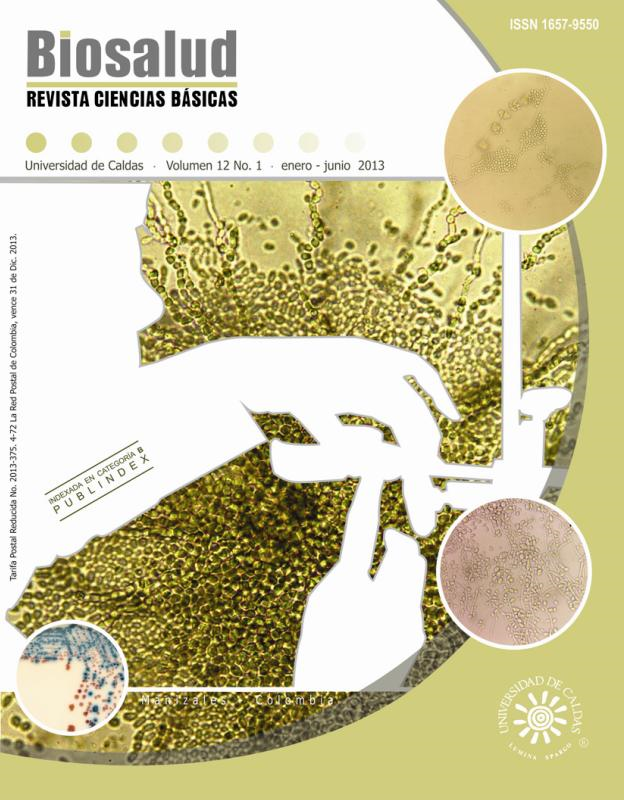Authors
Abstract
Objective: To compare two methods for the measurementdetermining of HDL cholesterol in Bos taurus cattle. Materials and Methods: Blood samples from 100 female cattle bovineof dairy breeds in the fasting state without discrimination of age were obtained. Serum extraction was obtained carried out to determine levels of HDL cholesterol by using the direct method and subsequently those same values HDL-cholesterol was determined were determined through by the precipitation method. Statistical analysis was performed using ANOVA single ANOVA. statistics analysis. Results: The direct method showed values inof 97.217, 66.200, 31.023 and 295.251 mg/dl for media, standard deviation, minimum and maximum were 97.217, 66.200, 31.023 and 295.251 respectively, and for the precipitation method reported values in mg/dl for media, standard deviation, minimum and maximum wereof 101.292, 33.588, 27.767 and 193.189 mg/dl for average, minimum, maximum and standard deviation respectively. The P value in test F >0.05, indicates that there is no statistically significant difference with a confidence level of 95%. Conclusion: Either one of the two methods analyzed for determining It is recommended to use any of the two analytical methods for determining HDL-cholesterol in cattle can be used.
Keywords
References
Coppo JA. Fisiología comparada del medio interno. Buenos Aires: Ed. Dunken; 2001. p. 212-216.
Cirio A, Tebot I. Fisiología metabólica de los rumiantes. Montevideo: Ed. CSIC; 2000. 146 p.
Montgomery R. Bioquímica: Casos y Texto. 6th ed. Madrid: Ed. Harcourt Brace; 1998. 904 p.
Pérez O. Lipoproteínas de alta densidad (HDL). ¿Un objetivo terapéutico en la prevención de la aterosclerosis? Arch Cardiol Méx 2004; 74(1):53-67.
Bauer JE. Metabolismo comparado de lípidos y lipoproteínas. Pet´s Ciencia 1997; 13:362-376.
Coppo NB, Coppo JA, Lazarte MA. Intervalos de confianza para colesterol ligado a lipoproteínas de alta y baja densidad en suero de bovinos, equinos, porcinos y caninos. Rev Vet 2003; 14(1):1-8.
Maldonado EN, Romero JR, Ochoa B, Aveldaño MI. Lipid and Fatty Acid Composition of Canine Lipoproteins. Rev Comp Biochem Physiol B Biochem Mol Biol 2001; 128(4):719-729.
Frank N, Sojka JE, Latour MA. Effect of withholding feed on concentration and composition of plasma very low density lipoprotein and serum nonesterified fatty acids in horses. Am J Vet Res 2002; 63:1018-1021.
Gaziano M, Manson JE, Ridker PM, et al. Primary and secondary prevention of coronary heart disease. In: Libby P, Bonow RO, Mann DL, Braunwald E, Zipes DP, eds. Braunwald’s Heart Disease: A Textbook of Cardiovascular Medicine; 2007; 8:45.
Vitic J, Stevanovic J. Comparative studies of the serum lipoproteins and lipids in some domestic, laboratory and wild animals. Comp Biochem Physiol B 1993; 106B:223-229.
EspondaburuOR. Hipertrigliceridemia: influencia sobre parámetros que estiman el transporte reverso de colesterol. Acta bioquím. clín. latinoam. 2006; 40(2):165-172.
Goldberg DI, Beltz WF, Pittman RC. Evaluation of pathways for the cellular uptake of high density lipoprotein cholesterol esters in rabbits. J Clin Invest 1991; 87:331-346.
Acton S, Rigotti A, Landschulz KT, Xu S, Hobbs HH, Krieger M. Identification of scavenger receptor SR-BI as a high density lipoprotein receptor. Sci 1996; 271:518-520.
Rigotti A, Krieger M. Getting a handle on “good” cholesterol with the high-density lipoprotein receptor. N Engl J Med 1999; 341:2011-2013.
Rigotti A, Miettinen HE, Krieger M. The role of the high-density lipoprotein receptor SR-BI in the lipid metabolism of endocrine and other tissues. Endocr Rev 2003; 24:357-387.
Trigatti BL, Krieger M, Rigotti A. Influence of the HDL receptor SR-BI on lipoprotein metabolism and atherosclerosis. Arterioscler Thromb Vasc Biol 2003; 23:1732-1738.
Tietz NW. Clinical guide to laboratory tests. 2nd ed. New York: Saunders Co; 1991. 420 p.
Grove TH. Effect of reagent pH on determination of high-density lipoprotein cholesterol by precipitation with sodium phosphotungstate-magnesium. Clin Chem 1979; 25:560-564.
López AA, Márquez YC, Mendoza CA, Ferraro SM, Márquez AA. Perfil lipídico en becerras mestizas Carora durante el primer año de vida, en época de lluvias y de sequía, en Venezuela. Rev Vet 2008; 19(1):2-7.
Galvis R, Correa H. Interacciones entre el metabolismo y la reproducción en la vaca lechera. ¿Es la actividad gluconeogénica el eslabón perdido? Rev Colomb Cienc Pecu 2002; 15:36-50.
Henao G, Galvis RD, Cardona LM, Castro NM. Relación entre Pérdida de Peso, Perfil Lipídico y Concentraciones Plasmáticas de Leptina en Vacas Cebú Primerizas. Rev.Fac.Nal.Agr. 2010; 63(2):5595-5605.
Ingraham R, Kapel R. Metabolic profile testing. Veterinary Clinic North America, Food Animal Practitioners 1988; 4:391-410.
Diskin MG, Mackey DR, Roche JF, et al. Effects of nutrition and metabolic status on circulating hormones and ovarian follicle development in cattle. Anim Reprod Sci 2003; 78:345-370.
Ceballos A, Gómez PM, Vélez MI, Villa NA, López LF. Variación de los indicadores bioquímicos del balance de energía según el estado productivo en bovinos lecheros de Manizales, Colombia. Rev Colomb Cienc Pecu 2002; 15:13-25.
Basoglu A, Sevinc M, Gokcen M. Peri and postparturient concentrations of lipid lipoprotein, insulin and glucose in normal dairy cows. Tr. J. of Veterinary and Animal Science 1998; 22:141-144.
Bauchart D. Lipid absorption and transport in ruminants. J Dairy Sci 1993; 76(12):3864-3881.
Kaneko JJ. Clinical Biochemistry of Domestic Animals. Department of Clinical Pathology, School of Veterinary Medicine, University of California; 1989. p. 930.
Barter PJ, Brewer HB, Chapman MJ, et al. Cholesteryl ester transfer protein: a novel target for raising HDL and inhibiting atherosclerosis. Arteriosclerosis Thrombosis and Vascular Biology 2003; 23:160-167.
Palacios M, Esteban M, Aguilar JA, Ortolá JB. Recomendaciones para la determinación de la concentración en suero del colesterol de las lipoproteínas de alta densidad. Quím Clín 1999; 18(1):33-40.
Schectman G, Sasse E. Variability of lipid measurements: relevance for the clinician. Clin Chem 1993; 39:1495-1503.
Álvarez ME, Suárez YJ, Cañas ES. Comparación entre el método directo y el método de precipitación para la determinación de los niveles de colesterol LDL en equinos. Rev Colomb Cienc Pecu 2009; 22(3):402.

 PDF (Español)
PDF (Español)
 FLIP
FLIP














